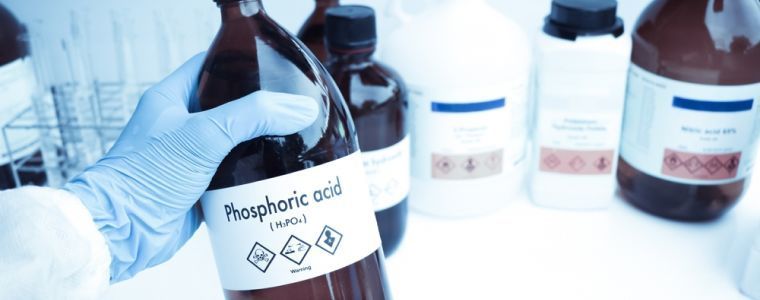Sodium Nitrate in Food Preservation, Glass Manufacturing and Explosives: How One Salt Powers Many Industries
The Industrial Power of Sodium Nitrate
Sodium nitrate (NaNO₃) is a naturally occurring inorganic compound composed of sodium, nitrogen and oxygen. Often appearing as a white, crystalline solid, this highly soluble salt plays a crucial role in multiple industries thanks to its chemical stability and oxidizing properties. Historically known as “Chile saltpeter”, sodium nitrate earned its nickname due to the vast natural deposits found in the arid regions of northern Chile, which became the world’s primary source of the compound in the 19th and early 20th centuries.
Though simple in structure, sodium nitrate is remarkably versatile. It serves as a preservative in food production, a key fluxing agent in glass manufacturing, and a critical oxidizer in the formulation of explosives and pyrotechnics. Its ability to support combustion, prevent spoilage, and modify melting points makes it an indispensable tool across sectors ranging from agriculture and defense to consumer goods and industrial chemistry.
This article examines how a seemingly unassuming salt can power such a diverse range of essential processes. From your kitchen shelf to high-tech manufacturing, sodium nitrate proves that a single compound can wear many hats.
What is Sodium Nitrate? A Chemical Overview
Sodium nitrate (NaNO₃) is an inorganic nitrate compound composed of one sodium (Na⁺) ion and one nitrate (NO₃⁻) ion. It appears as a white to slightly yellowish crystalline solid, highly soluble in water, and is known for its strong oxidizing properties. As a naturally occurring saltpeter, sodium nitrate has been used for centuries in agriculture, explosives and food preservation.
In terms of physical and chemical properties, sodium nitrate has a melting point of about 308°C and decomposes at higher temperatures, releasing oxygen and nitrogen oxides. This makes it particularly useful in applications that require combustion or oxidation, such as pyrotechnics and fertilizers. It is odorless, non-flammable, and stable under normal conditions, but should be kept away from organic materials and reducing agents due to its reactivity.
Sodium nitrate can be sourced naturally (most notably from the mineral deposits in Chile's Atacama Desert) or synthesized industrially by neutralizing nitric acid with sodium carbonate or sodium hydroxide. While natural sources are still mined, synthetic production is now common due to consistent quality and scalability.
Closely related to sodium nitrite (NaNO₂), sodium nitrate can be converted into nitrite through chemical reduction. Although both are used in food processing, sodium nitrite is more reactive and must be handled with greater care due to its toxicity at high concentrations.
When working with sodium nitrate, standard safety considerations apply: use protective equipment, store in a dry, cool place, and avoid contamination with combustible substances.
Sodium Nitrate in Food Preservation: Safety & Science
How It Preserves Food
Sodium nitrate has long been used as a food preservative, especially in processed and cured meats. Its primary function is to inhibit the growth of harmful bacteria, most notably Clostridium botulinum, which causes botulism - a rare but potentially deadly illness. By preventing bacterial proliferation, sodium nitrate helps make preserved meats safer for consumption.
Another critical role of sodium nitrate is color retention. It reacts with meat proteins to maintain the pink or red color associated with products like ham, salami and bacon. Without this additive,
cured meats would appear gray and less appealing to consumers. Additionally, sodium nitrate contributes to extended shelf life, allowing meats to be stored and transported over longer periods without spoilage.

Controversy and Health Risks
Despite its effectiveness, the use of nitrates in food has stirred health debates. One concern is that sodium nitrate can be converted into sodium nitrite, which under certain conditions (especially high heat) can form nitrosamines, a group of compounds that have been linked to cancer in animal studies.
While research continues, organizations like the World Health Organization (WHO) and the U.S.
Food and Drug Administration (FDA) have acknowledged these potential risks and established strict regulatory limits for nitrate and nitrite levels in food products. Modern processing methods and the use of antioxidants like vitamin C help minimize nitrosamine formation, making the use of sodium nitrate safer than in the past.
Common Foods Containing Sodium Nitrate
Sodium nitrate is most commonly found in cured and processed meats. Typical products include:
- Bacon
- Sausages and hot dogs
- Deli meats like ham and pastrami
- Beef jerky and salami
- Smoked fish
While these foods rely on sodium nitrate for safety and flavor, consumers are encouraged to enjoy them in moderation. Awareness of cured meat chemicals and balanced dietary habits remains key to minimizing potential health risks.
In summary, sodium nitrate plays a dual role in food: it enhances preservation and safety, but also calls for informed use and proper regulation to manage its risks.
Glass Manufacturing: Sodium Nitrate’s Role in High-Temperature Processes
Sodium nitrate is more than a preservative - it also plays a crucial role as a glass chemical agent in modern manufacturing. Thanks to its thermal stability and strong oxidizing power, it’s widely used to optimize high-temperature glassmaking processes, where precision and purity are critical.
Melting Point Modification
In glass production, silica (SiO₂) is the primary raw material, but it has a high melting point of over 1,700°C. Sodium nitrate acts as a melting agent in glass, helping to lower the melting point of silica and other batch components. This reduction in temperature improves energy efficiency and reduces strain on industrial furnaces.
Additionally, sodium nitrate plays a key role in color production in glass. It can influence the oxidation state of metal ions (such as iron or manganese) within the batch, helping manufacturers produce desired hues and consistent color tones in decorative and specialty glass.
Oxidizing Agent in Glass Production
Beyond melting assistance, sodium nitrate functions as a powerful oxidizer in glassmaking. During the high-temperature phase, it reacts with impurities and trapped gases in the molten mixture. This removes air bubbles, ensuring the finished product is clear, smooth and free of visual defects.
By promoting a more uniform melt and oxidizing unwanted inclusions, sodium nitrate enhances the clarity and durability of glass. This is especially valuable in optical glass, tableware, and specialty products where appearance and structural integrity are paramount.
Whether in art glass or industrial applications, sodium nitrate’s role as both a melting facilitator and oxidizing agent makes it an indispensable component in high-performance glass manufacturing.
Sodium Nitrate in Explosives and Pyrotechnics
Sodium nitrate has a long and well-documented history in the world of explosives and pyrotechnics. As a strong oxidizing agent, it provides the oxygen needed to sustain rapid combustion, making it a key ingredient in various nitrate explosives used for both military and industrial purposes.
Role in Gunpowder and Propellants
One of the earliest uses of sodium nitrate was as an oxidizer in gunpowder, particularly in regions where potassium nitrate was scarce. While potassium nitrate (KNO₃) is generally more effective due to its lower hygroscopicity (it absorbs less moisture from the air), sodium nitrate served as a valuable substitute, especially in arid climates like northern Chile, where it was mined in abundance.
Sodium nitrate-based propellants are less stable in humid environments, which limits their long-term storage and makes them less preferred for modern ammunition. However, in specific controlled applications, sodium nitrate remains a viable and cost-effective oxidizer.

Industrial Explosives and Mining Applications
In modern industries, sodium nitrate is used in blends with ammonium nitrate to produce powerful blasting agents for controlled demolitions and mining. These formulations are valued for their consistent performance, ease of handling and cost efficiency.
In mining, sodium nitrate helps initiate controlled explosions that fragment rock and access valuable mineral deposits. It is also used in quarrying and construction where precise, localized energy release is required. The compound’s oxidizing ability ensures that fuels in explosive mixtures burn thoroughly and cleanly, reducing unwanted residues.
Fireworks and Pyrotechnics
In fireworks and pyrotechnics, sodium nitrate contributes to vibrant flame colors, particularly yellows and whites, and supports the rapid combustion needed for aerial bursts and effects. Its oxidizing power makes it a staple in flare compositions, sparklers and theatrical displays.
Due to its reactivity, sodium nitrate must be handled with care. Strict safety measures are required during storage, transportation and blending to prevent accidental ignition or chemical instability - especially when mixed with fuels or organic compounds.
From ancient gunpowder to modern mining and
fireworks, sodium nitrate explosives continue to play a vital role in applications where energy, color and control are key.
Other Industrial Uses of Sodium Nitrate
Beyond its roles in food, glass and explosives, sodium nitrate finds application in several other key industries due to its chemical versatility and stability.
One of the most widespread uses is in nitrate fertilizers. As a rich source of nitrogen, an essential nutrient for plant growth, sodium nitrate is commonly applied in agriculture to boost crop yields. Its high solubility allows it to deliver nitrogen quickly to plants, making it especially useful for soils with low natural nitrogen content.
In the energy sector, sodium nitrate in solar power systems is gaining attention. It is used in heat transfer salts for concentrated solar power (CSP) plants, where it helps store and transfer
thermal energy at high temperatures. When blended with potassium nitrate, it forms a molten salt mixture that retains heat efficiently, allowing solar facilities to continue generating electricity even after sunset.
Additionally, sodium nitrate is used in metal treatment processes. It serves as a corrosion inhibitor in metal finishing and surface treatments, helping to prevent rust and degradation in steel and other alloys. This makes it valuable in industries like automotive, construction and aerospace.
These diverse applications highlight sodium nitrate’s continuing relevance as a multi-functional industrial compound.
Environmental and Safety Concerns
While sodium nitrate is a valuable industrial compound, its environmental impact and safety considerations must be carefully managed, especially in large-scale applications.
One of the primary concerns is nitrate pollution. Excessive use of sodium nitrate, particularly in agriculture as a fertilizer, can lead to groundwater contamination. When not fully absorbed by plants, nitrates may leach into the soil and make their way into water supplies. Elevated nitrate levels in drinking water can pose health risks, especially for infants and pregnant women, and contribute to eutrophication in aquatic ecosystems - an overgrowth of algae that disrupts aquatic life.
From an occupational perspective, handling sodium nitrate requires caution. Although it is non-combustible, sodium nitrate is a strong oxidizer and can intensify fires when in contact with flammable or organic materials. Proper storage in dry, cool, and well-ventilated areas, away from incompatible substances, is essential for safe use.
In industrial settings, responsible disposal is critical. Companies must follow local and international guidelines for sodium nitrate disposal, which often include neutralization steps or controlled incineration to minimize environmental impact. Spill containment and wastewater management practices are also key to preventing contamination.
Awareness and compliance with safety protocols ensure that sodium nitrate is used responsibly and sustainably.
Future of Sodium Nitrate: Innovation and Sustainability
As industries shift toward green chemistry and environmentally conscious practices, the future of sodium nitrate lies in innovation and sustainability. Researchers are exploring cleaner synthesis methods that reduce waste, energy consumption and reliance on mined natural deposits - helping to lower the environmental footprint of nitrate production.
In parallel, development of biodegradable nitrate substitutes is underway, particularly in agriculture and food applications. These alternatives aim to provide the same functionality while improving environmental compatibility and reducing risks of nitrate pollution.
Industrial sectors are also adopting enhanced safety protocols to ensure responsible use and storage of sodium nitrate, especially in high-risk environments such as mining and pyrotechnics. Advances in monitoring, containment and automation help minimize human exposure and ecological hazards.
With its wide range of applications, sodium nitrate will continue to play a key role in global industry, but its sustainable evolution will be essential in balancing performance with environmental responsibility.
Conclusion: The Salt That Shapes Industries
From preserving food to shaping glass, powering fireworks and aiding modern agriculture, sodium nitrate proves itself as a remarkably versatile compound. Its critical roles across industries highlight the power of simple chemistry to drive complex innovation.
Yet with great usefulness comes responsibility. Balancing the benefits of sodium nitrate with its environmental and safety considerations is essential for sustainable industrial progress.
As we continue to rely on such compounds, growing awareness of how industrial chemicals are handled, used and regulated will be key to protecting both people and the planet, without compromising on performance.
FAQs
What is the difference between sodium nitrate and sodium nitrite?
Sodium nitrate (NaNO₃) and sodium nitrite (NaNO₂) are both nitrogen-based salts but differ in chemical structure and function. Sodium nitrate is more stable and often used as a preservative and oxidizer, while sodium nitrite is more reactive and commonly used in curing meats. Under certain conditions, nitrate can convert into nitrite within the body or during food processing.
Is sodium nitrate safe to eat?
In regulated amounts, sodium nitrate is considered safe for consumption and is approved by the FDA and WHO for use in food. However, excessive intake may lead to health concerns, particularly due to potential conversion into nitrosamines - compounds linked to cancer. That's why regulatory bodies enforce strict limits on its usage in processed meats.
How is sodium nitrate used in fireworks?
Sodium nitrate in fireworks acts as an oxidizing agent, providing the oxygen needed to sustain combustion. It also contributes to the creation of bright white and yellow flame effects. Its stable combustion profile makes it ideal for flares, sparklers and aerial shells.
Why is sodium nitrate used in glass production?
In glass manufacturing, sodium nitrate helps lower the melting point of silica and acts as an oxidizer to eliminate air bubbles. This improves the clarity, durability and color consistency of the final product, making it vital in producing high-quality glass.
Can sodium nitrate be replaced with natural alternatives?
While research is ongoing, biodegradable or plant-based nitrate alternatives are being explored, particularly in agriculture and food. However, for industrial uses like explosives and glassmaking, sodium nitrate’s unique properties remain difficult to replicate with natural substitutes.
















